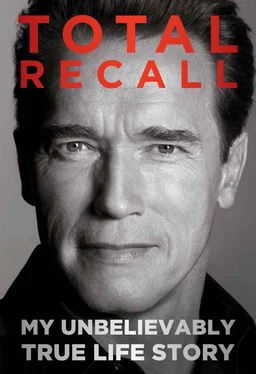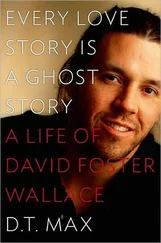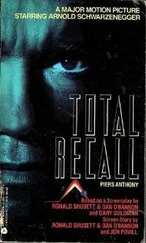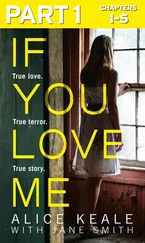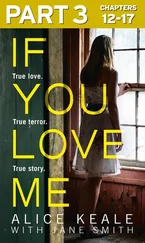_
The birth of our daughters came just as I reached the stratosphere with my movie career. By Christmas 1990, a few weeks after Katherine’s first birthday, Time magazine put me on the cover as Hollywood’s top star and called me “at forty-three, the most potent symbol of worldwide dominance of the US entertainment industry.” Kindergarten Cop was in the theaters that holiday and was already a major hit.
But I had an even bigger project in the works: Terminator 2: Judgment Day.
Seven years had passed since The Terminator lifted both our careers, and Jim Cameron and I had always felt committed to a sequel. He’d directed a couple of huge pictures since then— Aliens and The Abyss —and, finally, in 1990 he got the rights and preliminary financing in place for Terminator 2 . Still, I was a little thrown when Jim sat me down at a restaurant and told me his concept for my character in the film.
“How can the Terminator not kill anyone?” I asked. “He’s a terminator! That’s what people want to see, me kicking in doors and machine-gunning everybody.” I was suspicious that the studio was pulling back and trying to make the Terminator into something rated PG. That had destroyed Conan and I didn’t want to see it happen to the Terminator.
“No, no,” said Jim. “You’re still really dangerous and violent. But this time the Terminator comes back when John Connor is a kid, and he’s programmed to protect him. He’s not the villain anymore. The villain is a new, smaller, even scarier terminator—the T-1000—that is programmed to kill Connor. Your terminator has to stop it.” The killing was still there, but it was done by the T-1000. As soon as I understood that the movie was going to stay R-rated, I relaxed.
As T2 began taking shape, my other businesses were booming. I’d used some of the money I’d earned in films as capital to expand in real estate. Now I owned three good-sized apartment buildings in LA with a total of more than two hundred units, plus the Denver property, which Al Ehringer and I were developing into offices, restaurants, and shops. Our gamble on the run-down side of Santa Monica had paid off too: 3110 Main was now a thriving complex of offices and shops, and the neighborhood had become hip. Our first set of tenants—boring corporate tenants like a bank, an insurance agency, and a real estate office—had given way to producers, directors, and entertainers. Johnny Carson had his office on the second floor, and I split the third floor with Oliver Stone. “Why don’t I take the space to the left of the elevators,” he suggested, “and you take the space to the right? That fits with our politics.” I laughed and agreed, which is why my office is where it is today. A little later, LA Lakers basketball star Shaquille O’Neal moved into the building, and then other producers and sports managers followed.
I was also launching a huge public service project. Very soon after Katherine’s birth, I got the call from the White House that I’d been hoping for. “The president would like you to chair the President’s Council on Physical Fitness and Sports,” the representative told me formally, adding, “He says he wants you to do just what you proposed during the campaign: to put fitness for everybody back on the national agenda.” Being named “the president’s fitness czar,” as the media called it, was the most satisfying development in my work life. I saw this as part of the crusade I’d started decades ago, promoting bodybuilding as a means to fitness and health. Also, by working with the Special Olympics, I was selling the idea of sports and fitness for everyone, not just athletes. This was why I’d been so emphatic with President Bush about wanting the job. So much could be done with it. The White House always made the mistake of appointing big sports names, but not people who had a record of getting the job done or had the ability to follow through. You needed an athlete or idol, yes, but someone who would do the work, not just sit on the throne. I had a clear vision of what had to be done. And by this time, I was addicted to public service, especially doing things for kids. It had nothing to do with fame anymore.
This news was almost as gratifying to my mother-in-law as it was to me. Eunice had written personally to President Bush to recommend me—she felt passionately about fitness not only because of her leadership of the Special Olympics but also because the strongest presidential champion for fitness since Teddy Roosevelt had been her brother Jack. When I called to thank her, she asked immediately, “How are they planning to announce it?”
“I don’t know,” I said. “What would you suggest?”
“First of all, I’d have you meet with the president in the Oval Office. Have them take a picture of that meeting and release it to the public. After the meeting, I’d have you and the president come out of the White House together and talk to the press. You should be ready to make a statement about what you bring to the table and what your mission as chairman is going to be. You always have to have a mission and a reason why you’re the right choice.”
Eunice had the Kennedy political genius. She knew that a job appointment at this level was not normally considered big enough to justify a press conference. The president has all kinds of councils: the Council of Economic Advisers, the health council, the drug council, the job creation council, and on and on. Ordinarily, for an appointment like mine, the White House press office would simply put out a statement along the lines of: “Today President Bush announced that he has chosen Arnold Schwarzenegger to be the chairman of the President’s Council on Fitness.” After that, it would be an uphill battle to get anybody’s attention. But if the press sees you coming out of the Oval Office with the president, you’ll win respect.
The president, it turned out, was totally on board—he had his guys orchestrate the announcement to make me look like a big shot. It was very close to what Eunice had envisioned. I went outside the White House to where the journalists were. I talked about my appointment, my meeting in the Oval Office, my enthusiasm, my vision, my mission statement.
The challenge of being fitness czar really excited me, and by the time I met with the president again, up at Camp David in Maryland a few weeks later, I’d done my homework. I wanted to bring back and expand all the sports and fitness events that JFK had held. I’d asked Sarge and Eunice what they thought I could do with this appointment. They’d been around when Jack was in charge; what was his vision? Why did he hold fitness events in front of the White House on the South Lawn? I wrote down everything. I met with the Department of Health and Human Services, the Department of Agriculture, and White House officials. That’s how I started building an agenda. I also sought out experts like John Cates of the University of California, San Diego, implementer of the country’s first Youth Fitness Camps. So I was ready with a detailed proposal.
“The council has been thinking small,” I told President Bush. “We need to change that.” I described how we would bang the drum in DC and get the departments in charge of health, education, and nutrition to coordinate on a national fitness campaign. We’d also make fitness much more visible at the White House. “Let’s do a public fitness demo on the White House lawn this spring,” I suggested.
I sketched how this would work: we’d set up stations for golf, tennis, aerobics, weight training, baseball, rope climbing, and other activities that the average person could undertake. We’d invite trainers, athletes, parents, grandparents, and kids, and the national media, especially the morning shows. “We’ll get everyone involved,” I said. “Then you and Barbara can come out of the White House and take the lead and try things. It’ll be a celebration, like Fourth of July, and it will show that fitness is fun.”
Читать дальше
